A Tourney Chest That Comes Apart
Recently I went by air to an out of kingdom weekend event, a weekend
devoted to period cooking at which I was one of the instructors. I
didn't like the idea of spending an SCA weekend living out of a
suitcase, so designed a peg together tourney chest that broke down to a
collection of planks that would fit in my luggage. The chest is loosely
based on the Mastermeyer chest, a Norse chest from about 1000 A.D.
originally containing a collection of tools; I modified the design,
converting all the joints to pegged tenon and mortice so that it could
be taken apart. Information
on the original and a description of a much closer reconstruction is
available on the web.
The chest consists of six pieces, five of which are shown below--two
sides, two ends, a bottom and a top (not shown). The longest pieces are
25" long, which was just slightly less than the longest dimension of my
suitcase. If you are making it for the same purpose I was, you will
want to adjust the size accordingly, based on the dimensions of your
luggage. The photograph shows all six pieces.
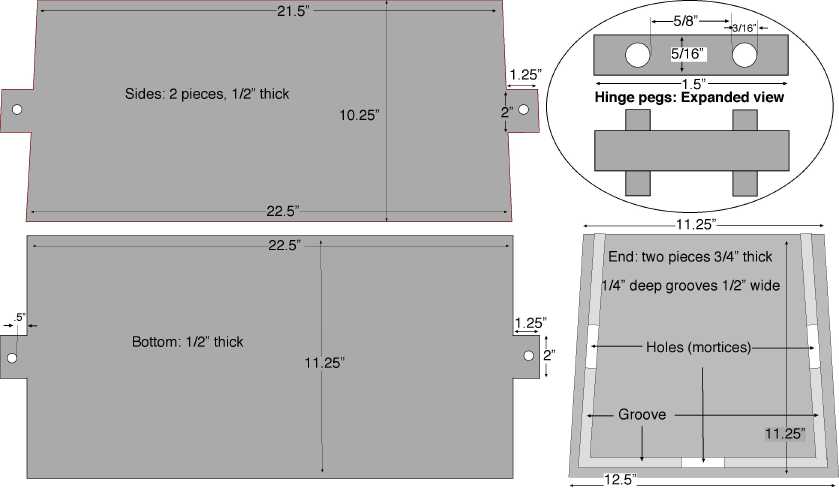
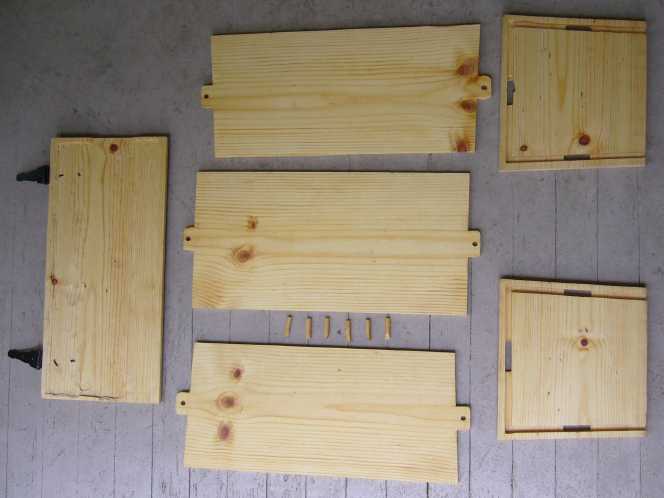
I made the chest out of pine; you could use hardwood but it would be
both heavier and more expensive. The pegs holding it together are short
lengths of 3/8" diameter dowel going through 3/8" diameter holes; the
holes are inset ½" from the edges of the bottom and side
as shown. I
used a router to make the grooves; if you don't have one you could use
a chisel.
The trickiest parts were the lid and the hinges. The lid of the
original is curved. To make something similar you start with a
¾"
thick plank 10.5"x22.5", hollow out the bottom and curve the top, as
shown in the photographs. I used a router and then a chisel, but you
could do it with just a chisel. My original plan was to attach the lid
to the side in a way that let the two pieces fold flat but I was unable
to find a way of doing that that looked right, so ended up attaching
the hinge to the top with nails peened over--in effect rivets--and to
the side with removable pegs. The figure above shows an expanded view
of one of the pegs--a 5/16" dowel with two 3/16" holes in it that two
short 3/16" dowels fit through. The exact distance between the holes
will depend on the thickness of your hinge.
After I made it, someone suggested permanently attaching both parts of
the hinge and making the hinge pin that held them together removable;
if I do another one I may try that.
List of Materials:
1/2" pine: 2/25"x10.5, 1/25"x11.25"
3/4" pine: 2/12.5"x11.25". 1/22.5"x10.5"
Dowels: 3/8"x12", 5/16"x 9", 3/16"x5" (enough for some spares)
Hinges: One pair
Photos of the chest:

Closeup of Hinge
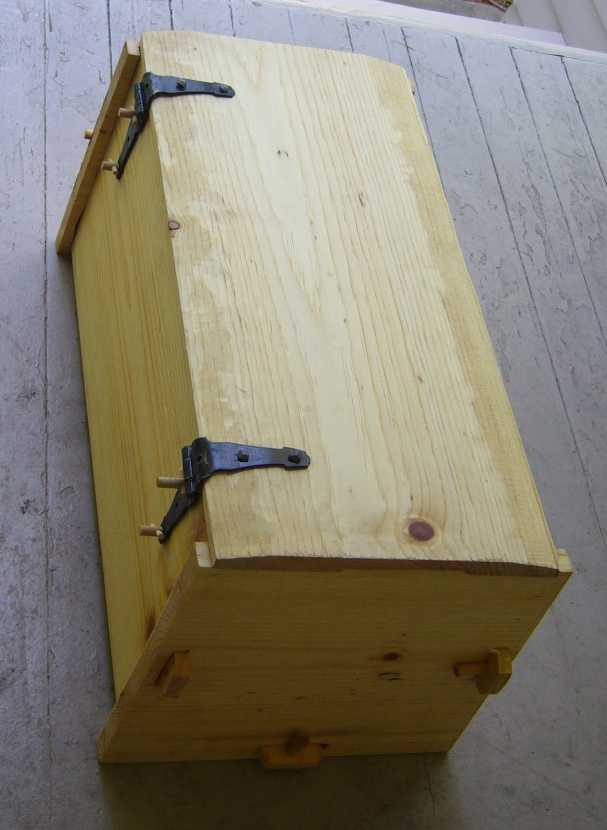
Chest with lid closed
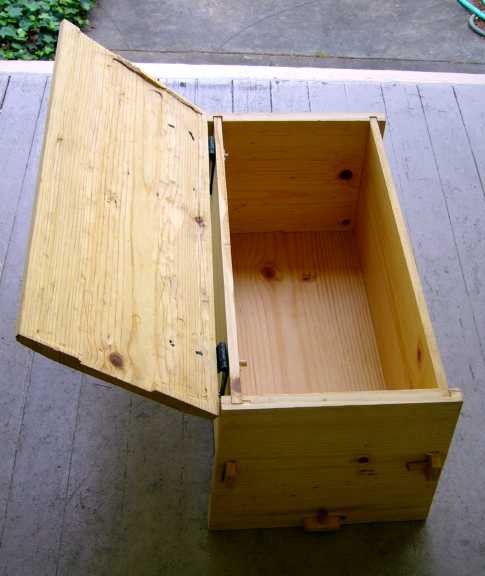
Chest with lid open
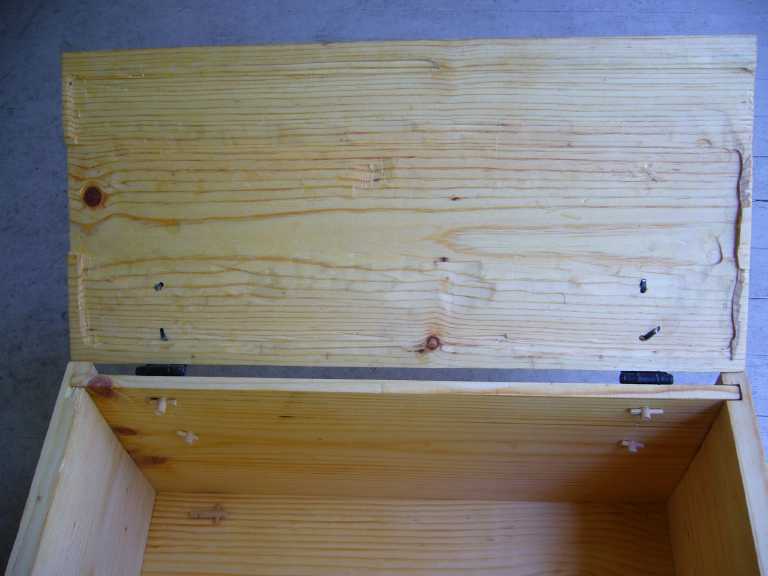
Closeup with lid open
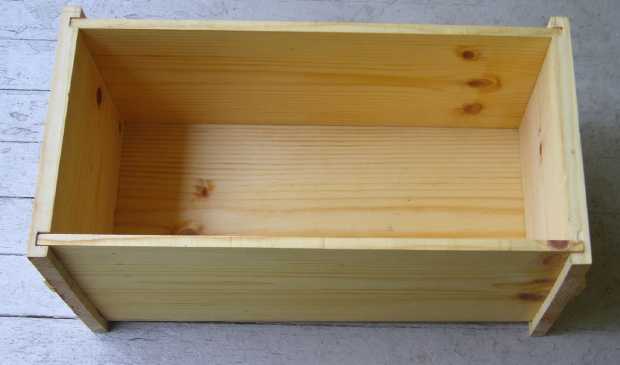
Chest without lid
(Readers who look closely will see
that I made the grooves deeper than recommonded in the instructions. I
also had one end piece break as a result.)






